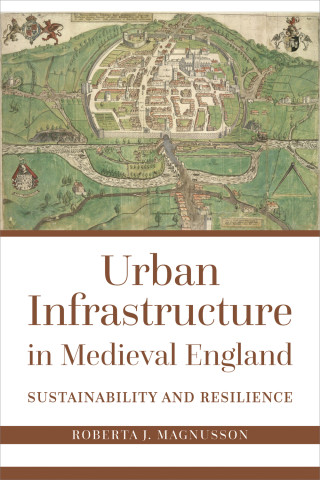How medieval English towns built, sustained, and reimagined the lifelines of urban life.
In the bustling market towns and growing cities of medieval England between 1200 and 1600, public works were the lifelines of urban society. In Urban Infrastructure in Medieval England, Roberta J. Magnusson offers the first comprehensive study of how medieval towns built, financed, and sustained their defenses, bridges, streets, water systems, and harbors.
Magnusson reveals how even modest communities, like the Warwickshire town of Atherstone, boldly pursued projects that reshaped their futures. Grants of...
How medieval English towns built, sustained, and reimagined the lifelines of urban life.
In the bustling market towns and growing cities of medieval England between 1200 and 1600, public works were the lifelines of urban society. In Urban Infrastructure in Medieval England, Roberta J. Magnusson offers the first comprehensive study of how medieval towns built, financed, and sustained their defenses, bridges, streets, water systems, and harbors.
Magnusson reveals how even modest communities, like the Warwickshire town of Atherstone, boldly pursued projects that reshaped their futures. Grants of tolls and taxes funded paving initiatives, bridge repairs, and fortified walls, while enterprising lords and abbots sponsored sluices, conduits, and quays. These efforts were not confined to England's great cities; small towns with limited means also sought to enhance their competitive edge, even when such investments strained their resources. Drawing on royal records, municipal archives, and archaeological evidence, Magnusson situates these civic undertakings in their broader social and environmental contexts. She shows how townsmen adapted traditional obligations of labor and charity alongside innovative fiscal tools to sustain projects that could span generations. Yet the balance was fragile. The crises of the fourteenth century—famine, plague, and the harsher climate of the Little Ice Age—undermined local resources, leaving many communities to struggle with maintenance or watch their infrastructures decline.
At once a history of engineering, economy, and community, this study illuminates how medieval people conceived of security, health, and prosperity through the material fabric of their towns. By tracing the rise, transformation, and survival of these infrastructures, Magnusson demonstrates how urban communities navigated centuries of change while shaping the very landscapes in which they lived.






